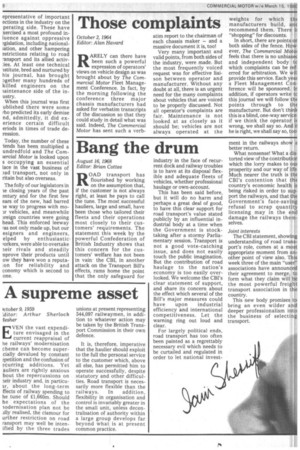A supreme asset
Page 60

If you've noticed an error in this article please click here to report it so we can fix it.
1c to be r 9, 1959 :clitor: Arthur Sherlock lesher EVEN the vast expenditure envisaged in the current reappraisal of he railways' modernisation cheme can become superdaily devalued by constant petition and the confusion of ecurring additions. Yet auliers are rightly anxious bout the repercussions on leir industry and, in particu1.r, about the long-term ffects of railway spending to he tune of £1,660m. Should he expectations of the lodernisation plan not be Ay realised, the clamour for urther restriction on road ransport may well be intenified by the three trades unions at present representing 544,097 railwaymen, in addition to whatever action may be taken by the British Transport Commission in their own defence.
It is, therefore, imperative that the haulier should exploit to the full the personal service to the customer which, above all else, has permitted him to operate successfully, despite statutory and other difficulties. Road transport is necessarily more flexible than the railways. In addition, flexibility in organisation and control is invariably greater in the small unit, unless decentralisation of authority within a large group develops far beyond what is at present common practice.
































































































































